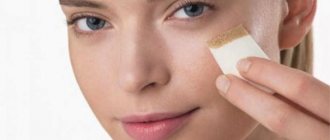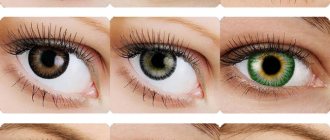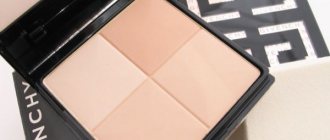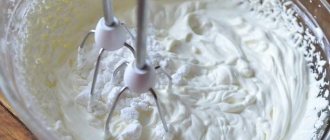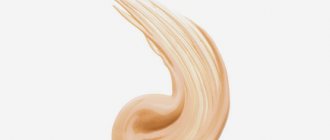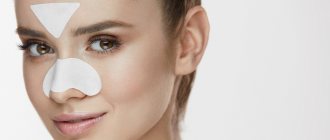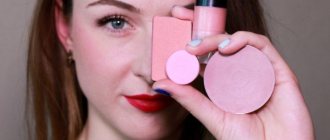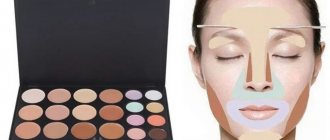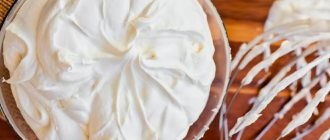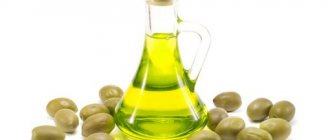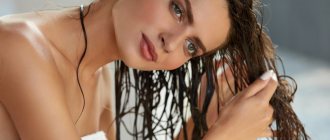Adviсe
- Powder components
- Texture of different types of powder
- How to apply foundation correctly?
- Loose powder: application rules
- Compact powder: application rules
- Mineral powder: application rules
- Bronzing powder: application rules
- Professional powder
How and what to apply powder correctly? Many women ask this question. After all, the velvetyness of the skin, its evenness and matteness depends on how correctly you do everything. The method and manner of applying powder directly depends on the products that you have chosen as cosmetics and for applying it. However, there is one rule - you need to apply powder from top to bottom (from forehead to chin), brush strokes should also be longitudinal. If you are going to spend the whole day in open-necked clothes, do not powder your neck and décolleté.
Powder components
In the Middle Ages, powder was made from natural ingredients. To do this, they used flour from various cereals (wheat, rice, oats), potato and corn starch, and added lead, ground into powder, to achieve the maximum bleaching effect.
Today, the quality composition of the powder has undergone some changes.
Manufacturers add the following components to it:
- All the same cereal flour;
- Cosmetic talc;
- Cosmetic clay – kaolin or red;
- Starch, mainly potato;
- Potassium hydroxide;
- Fragrances with floral aroma;
- Vegetable oils.
Depending on the manufacturer and recipe, silk fibers, vitamins and microelements are added to the powder. Before purchasing powder, carefully study its composition indicated on the label. Instead of a natural cosmetic product, you risk purchasing a compound of synthetic substances that is harmful to your health. To reduce the cost of the product, manufacturers replace natural substances with components of artificial origin.
Texture of different types of powder
Based on texture, powders are divided into the following types:
- Foundations have a creamy structure;
- Loose powder has a delicate powdery structure;
- Powder in the form of balls rolled into peas;
- Pressed powder. It is also called compact.
When choosing the right powder option for yourself, consider your skin type and the conditions in which you intend to use this product. Powder with a creamy structure is used by women with dry skin. For those whose epidermis is prone to excessive sebum formation, it is recommended to exclude such a product from the set of cosmetic preparations.
One of the most popular loose powder among fashionistas is a gentle and effective product for those who are serious about their own image. It hides imperfections of the skin, while laying down in an even and thin layer. Cosmetologists are also confident that this powder is safe and easy to use. The only drawback is that it is difficult to carry in your purse for daily use outside the home.
Powder in the form of peas is not intended to hide skin imperfections or even out the tone of the face. With its help, they add radiance and regulate the shade of the skin.
Compact powder is an option for offices and travel. With its help, makeup problems that arise during the day are eliminated - shine of individual parts of the face, camouflage of imperfections, etc. For the most part, compact powder is suitable for any skin type. However, cosmetologists do not recommend frequently using this product for women with dry and irritated skin.
What types of powder brushes are there?
Typically, makeup artists advise choosing oval or round ones with soft bristles.
But each type of powder has its own type of brush:
- For a crumbly look , use an oval brush. The pile should not be too dense, otherwise too much makeup will accumulate on it, and the excess will fall off. The coating will be "stained". A layer that is too thick can fall off your face and stain your clothes during the day.
- for mineral and compact brushes. You can also use flat fan ones, with them the coating will be very light and weightless.
Brushes can be natural or synthetic . For natural ones, squirrel, goat, and pony fur are used. Natural bristles are always soft, their porous structure allows them to capture more cosmetics. But bacteria multiply faster on real hairs, so they need to be cleaned frequently with special products and wipes. Synthetic bristles are more versatile, they are hypoallergenic and wear out much slower. In addition, artificial material does not suffer as much from washing under the tap with soap or shampoo.
An ideal makeup brush should not crumble, scratch the skin, or absorb too much product.
How to apply foundation correctly?
This type of corrective cosmetics is not recommended for women whose facial pores are too wide. Foundation powder will not hide this flaw; it will make the situation even worse.
Cream powder is distributed over the skin using a sponge. It can be applied with a dry device or wetted with a little water. Before using foundation, wash your face thoroughly with water and foam cleanser. Apply a small amount of makeup cream to clean skin. Wait a couple of minutes until the product is absorbed, remove excess with a dry paper napkin.
Take your foundation brush and start working from your forehead. Gradually tone the skin of the forehead, cheeks, nose, chin. If you plan to use concealer, do not apply foundation powder under the eye area. We remove all excess with a dry cloth, and shade the unevenness. For the best effect, apply a thin layer of loose powder.
Tips for using powder for different skin types
The fact is that the powder is ideal for those with oily skin, but ladies with dry skin should exercise some caution.
face powder photo
And before applying powder to your face, you should do a little preparation:
- for oily skin - cleanse your face of excess oil, apply an oil-free moisturizer or toner. After some time, powder. Loose powder is ideal.
- Dry skin should first be well moisturized with a rich day cream, and then apply foundation. Cream powder works great for this option.
- those with normal skin type can celebrate their triumph. They can safely choose any product, be it loose, compact or liquid powder. Any product will only emphasize the perfection of the skin.
Top
Loose powder: application rules
To avoid leaving streaks and grooves, use a fluffy cosmetic powder brush or powder puff to work with. It is not advisable to use sponges for this type of cosmetic product. They are not designed to leave an even and thin layer of product on the skin. Most likely, the powder will form stains that don’t look beautiful even with amazing eye and lip makeup.
The procedure for applying loose powder to the face is as follows:
- Take the brush;
- Dip a little into the powder;
- Using light, tapping movements, distribute the product over the skin of the face, starting from the forehead to the chin and neck;
- Take a cotton swab, fluff it up and remove excess product.
Finally, shake the powder off the brush and sweep it over your face again. As a result, you will get an even, soft tone, velvety and delicate skin.
For women with hypersensitive skin, it is better to choose powder without aromatic fragrances.
Rules for applying powder to the face
- Before applying powder, be sure to moisturize your face with day cream according to your skin type;
- Do not apply the powder until the face cream is completely absorbed, otherwise it will roll into lumps and it will be extremely difficult to achieve an even shade;
- To make your lipstick more durable and to prevent your eye shadow from falling off and creasing in the creases of your eyelid, powder your eyes and lips before applying the powder.
- The shade of the powder should be as close as possible to the natural skin tone. Too dark, it will contrast against the background of the neck and shoulders. And it will create the effect of a “dirty face”, and if it is too light, it will turn you into a geisha.
- Powder is applied several times to the T-zone. Since this area of the skin is more prone to oily sheen, with the help of this manipulation it will remain matte longer;
- For an evening walk, it is better to choose powder in yellow and purple shades. Beige and pink tones are suitable for daytime makeup.
- If you have combination or oily skin, use mattifying wipes before powdering your face. With this technique, the powder will lie in an even layer.
- To achieve the desired result, use specially designed brushes and puffs;
- To make the skin silky, the powder should be applied from top to bottom.
Using these simple rules you can achieve the desired result. But it is worth remembering that you need to use only high-quality products that are licensed and tested by dermatologists. You need to purchase cosmetics in specialized stores.
Particular attention should be paid to the composition and date of production. Especially for women with sensitive skin. To avoid allergic reactions. If possible, you should smell the powder; if it has a strong smell, most likely a cheap fragrance was used in this product.
If the packaging or surface of the powder is damaged, and the cream is powder with air bubbles, it is not recommended to buy such a product. Be sure to follow the rules for storing powder and check the expiration date. It is very important to wash your brushes and sponges periodically, as they develop pathogenic bacteria that lead to skin inflammation.
Compact powder: application rules
This product was invented for women who cannot sit in front of a mirror and use loose powder. The compact version of this product is convenient to use on the run. However, there are nuances that are important when working with compact powder:
- Use the sponge included in the kit as a device for applying the product;
- There is no need to apply this product to the entire surface of the face; correct only the necessary areas of the skin;
- These include the wings of the nose, forehead or crease of the chin.
Cover the rest of the face with loose powder or leave it unchanged.
Mineral powder: application rules
To apply this type of product you need a fluffy brush (preferably made of natural bristles). Do not use puffs and sponges. You will only ruin the effect of using the product. In addition, using a brush allows you to control the amount of product applied to the skin. This type of powder is applied to the face from the contour to the center. The sequence of treatment of parts of the face with the product is as follows:
- Temple area;
- Forehead;
- Cheekbones;
- Chin;
- Nose.
After all areas of the face have been treated, apply a few strokes from top to bottom from the forehead to the chin. In this way, you will smooth the small fluff on the skin in the direction of its growth, which will even out the tone even better.
Bronzing powder: application rules
Bronzing powder is used in the following cases:
- To even out complexion with a beautiful, bronze tan;
- In case you want to give your skin the appearance of a tan. You just need to use the product extremely carefully. Apply bronzing powder to the skin in good lighting, carefully working every inch of the skin. At the same time, be sure to apply this powder to your neck and décolleté;
- Using the product as blush. It shades the overall skin tone well and goes on in an even, thin layer.
Professional powder
Professionals use a special type of powder with a transparent texture. Despite its name, this type of powder has such an unpredictable effect that it is not advisable to use it at home. You risk turning your face into an impenetrable mask.
The arsenal of professional stylists includes another type of powder - shimmer. This product is used for festive (evening) makeup. Recommended for use as blush
Loose, creamy and compact powder comes in different shades. By combining these colors correctly, you will correct the shape of your face without resorting to blush. To do this, apply the main tone of powder that matches the color of your skin over the entire surface of your face. After that, take a blush brush and apply a darker color along the desired lines along the contour of your cheekbones (or under it). Cream powder is better suited for this method. However, do not forget that the rules of makeup do not tolerate sharp boundaries and transitions. Therefore, blend the boundaries of the tones well.
You can use two or more types of powder for proper makeup. For example, make a foundation using foundation, and use loose or compact derivatives as blush.
And one more tip for those who prefer creamy types of powder over all others - before applying the foundation, slightly moisten the sponge or tip of the brush in water. This will help the product to spread in a thin layer over the surface of the epidermis and carefully hide all imperfections of the skin.
Powder sponges
Sponges were widely used even before brushes came into mass use. Every compact powder manufacturer included a foam sponge in the box. Since then, cosmetics manufacturers have come a long way, and every makeup artist must have modern sponges.
Nowadays, cosmetic sponges come in different shapes: oval, cylindrical, pear-shaped, square. A flat oval or round sponge is best for applying powder.
Sponges are:
- Natural : made from fibers of algae, rubber or other plants.
- Artificial : made of synthetics, foam rubber, silicone and various fabrics.
Synthetic sponges are more suitable for powder. Their texture is denser, so you can pick up more product. But such a sponge gets dirty quickly, it needs to be washed quite often, or better yet, replaced with a new one. If used daily, the sponge needs to be renewed at least once a week, as its surface serves as a good environment for the development of bacteria.
The surface of the sponge can be smooth or fleecy. Smooth ones are suitable for pressed powder, and fluffy ones are suitable for loose powder. The main thing is that it is pleasant and smooth to the touch and without an unpleasant odor.
